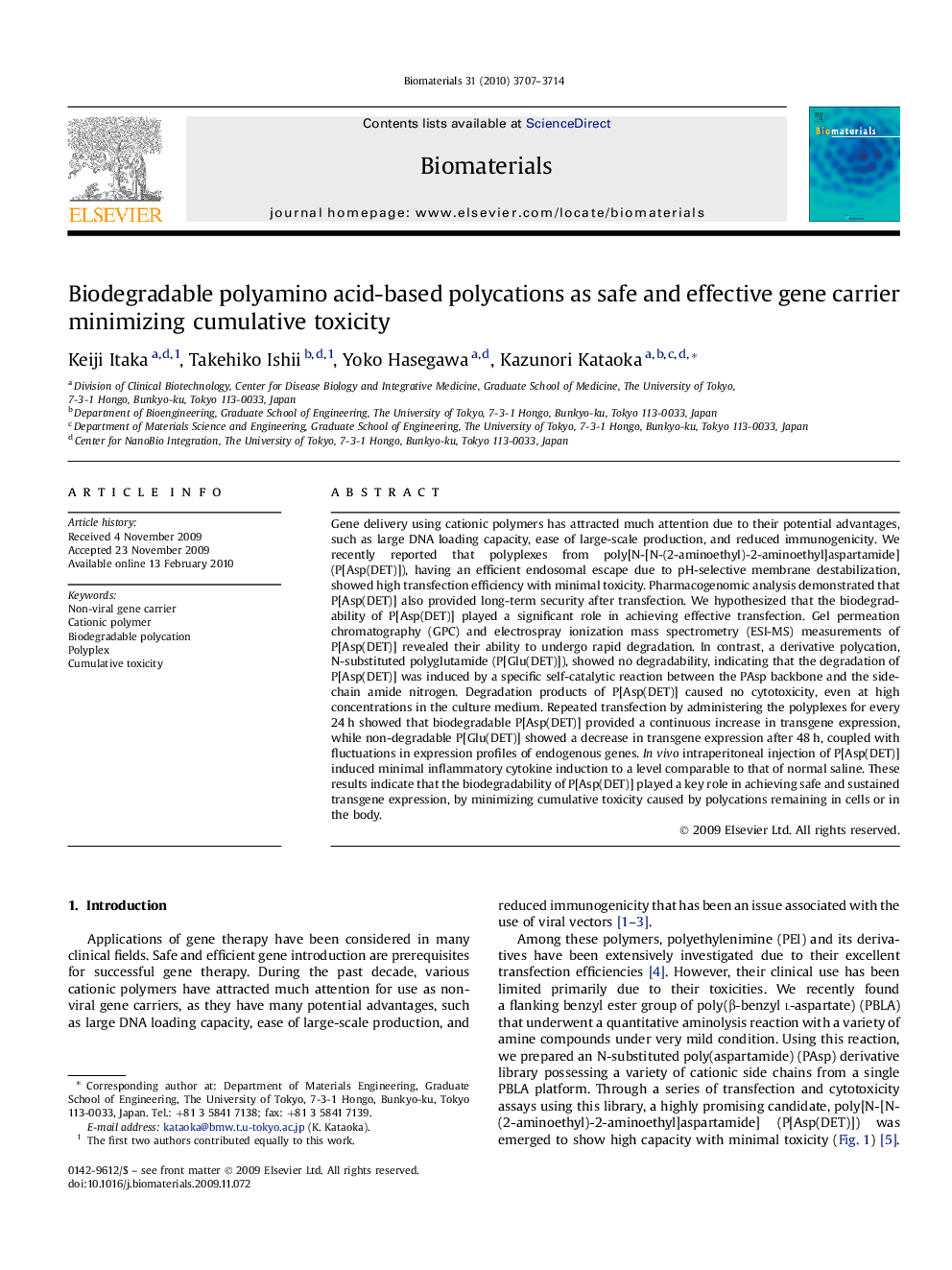| Article ID | Journal | Published Year | Pages | File Type |
|---|---|---|---|---|
| 9725 | Biomaterials | 2010 | 8 Pages |
Gene delivery using cationic polymers has attracted much attention due to their potential advantages, such as large DNA loading capacity, ease of large-scale production, and reduced immunogenicity. We recently reported that polyplexes from poly[N-[N-(2-aminoethyl)-2-aminoethyl]aspartamide] (P[Asp(DET)]), having an efficient endosomal escape due to pH-selective membrane destabilization, showed high transfection efficiency with minimal toxicity. Pharmacogenomic analysis demonstrated that P[Asp(DET)] also provided long-term security after transfection. We hypothesized that the biodegradability of P[Asp(DET)] played a significant role in achieving effective transfection. Gel permeation chromatography (GPC) and electrospray ionization mass spectrometry (ESI-MS) measurements of P[Asp(DET)] revealed their ability to undergo rapid degradation. In contrast, a derivative polycation, N-substituted polyglutamide (P[Glu(DET)]), showed no degradability, indicating that the degradation of P[Asp(DET)] was induced by a specific self-catalytic reaction between the PAsp backbone and the side-chain amide nitrogen. Degradation products of P[Asp(DET)] caused no cytotoxicity, even at high concentrations in the culture medium. Repeated transfection by administering the polyplexes for every 24 h showed that biodegradable P[Asp(DET)] provided a continuous increase in transgene expression, while non-degradable P[Glu(DET)] showed a decrease in transgene expression after 48 h, coupled with fluctuations in expression profiles of endogenous genes. In vivo intraperitoneal injection of P[Asp(DET)] induced minimal inflammatory cytokine induction to a level comparable to that of normal saline. These results indicate that the biodegradability of P[Asp(DET)] played a key role in achieving safe and sustained transgene expression, by minimizing cumulative toxicity caused by polycations remaining in cells or in the body.
